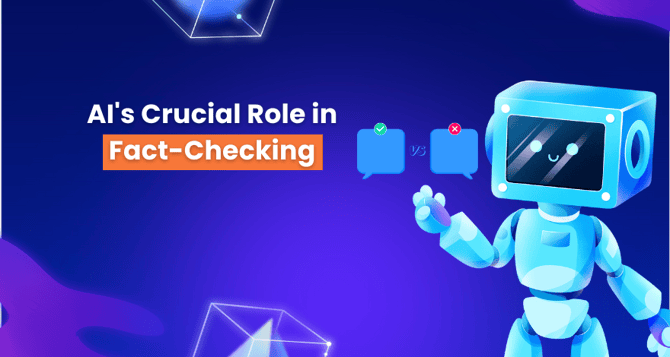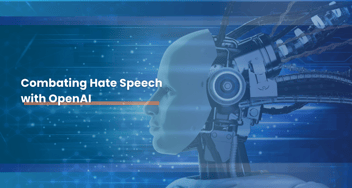AI's Crucial Role in Fact-Checking and Misinformation Combat
In the fight against misinformation, AI is pivotal in fact-checking, ensuring accuracy. This underscores AI's critical role, leveraging advanced algorithms for swift identification of inaccuracies, fostering a trustworthy digital landscape. Its continuous evolution positions AI as an indispensable tool in safeguarding the integrity of information dissemination.

In an era where information is readily available at our fingertips, the spread of misinformation and fake news has become a significant concern. The consequences of false information can be dire, impacting public opinion, decision-making, and even public health.
OpenAI, a prominent player in AI development, leads the charge against misinformation. This article delves into the technical facets of their solutions for fact-checking, exploring real-world examples that showcase the company's impactful contributions.
The Challenge of Misinformation
Misinformation can spread like wildfire, especially through social media platforms. Recognizing the need for reliable fact-checking tools, OpenAI has leveraged the capabilities of natural language processing and machine learning to create systems that can detect and debunk false information.
GPT-3: A Powerhouse for Natural Language Processing
At the heart of OpenAI's fact-checking capabilities is GPT-3, one of the most advanced natural language processing models. GPT-3, short for "Generative Pre-trained Transformer 3," is a deep learning model that has been trained on a vast corpus of text from the internet. It can understand, generate, and manipulate text in a way that closely resembles human language.
Example 1: Text Generation and Analysis
One of the primary applications of GPT-3 is text generation and analysis. When presented with a piece of text, GPT-3 can assess its credibility, context, and factuality.
For example, if a user provides a statement like "Vaccines cause autism," GPT-3 can generate a response that presents evidence-based information to debunk this claim. It can also explain why the statement is false by referencing credible sources, studies, and statistics.
Example 2: Identifying False Claims
GPT-3 can also be used to identify false claims in real time. For instance, when a user posts a news article or social media post, OpenAI's system can quickly analyze the content and flag potential inaccuracies. If a claim is dubious or unsupported, GPT-3 can provide a warning or suggest fact-checking resources.
The Role of Data Training
The effectiveness of GPT-3 in fact-checking relies heavily on the data it has been trained on. OpenAI has carefully curated vast datasets that include reliable and fact-checked information. This data is used to fine-tune the model, allowing it to differentiate between trustworthy and unverified content.
Example 3: Detecting Biased Language
Misinformation often comes bundled with biased language. OpenAI's system can detect and highlight biased language in text, helping users recognize potentially unreliable sources. For instance, if a news article consistently uses emotionally charged language or exaggerations, the system can flag it for review.
Automated Fact-Checking Bots
In addition to text analysis, OpenAI has developed automated fact-checking bots that can verify information rapidly. These bots are programmed to scan large volumes of text and cross-reference claims with reputable sources.
Example 4: Real-Time Twitter Fact-Checking
OpenAI has partnered with social media platforms to implement real-time fact-checking. When a tweet or post is flagged as potentially false, the fact-checking bot provides immediate context and sources to validate or debunk the claim. This prevents the rapid spread of misinformation on these platforms.
User-Friendly Browser Extensions
OpenAI is also making fact-checking more accessible to the general public through user-friendly browser extensions. These extensions can be installed in web browsers and used to analyze the credibility of online articles, blogs, and social media posts.
Example 5: Browser Extension in Action
Imagine a scenario where a user is reading a news article online. With the OpenAI browser extension installed, they can simply highlight a sentence or claim and right-click to request a fact check. The extension then uses GPT-3 to analyze the highlighted text and provide immediate feedback on its accuracy.
The Future of OpenAI Fact-Checking
OpenAI continues to refine and expand its fact-checking capabilities. As more data becomes available and the models improve, the system's accuracy and efficiency will increase. OpenAI is also exploring partnerships with news organizations and social media platforms to integrate fact-checking features at scale.
Conclusion
OpenAI's technical implementations for fact-checking and detecting misinformation are pivotal in the fight against the spread of false information. OpenAI, with GPT-3 and fact-checking bots, makes accessing reliable information easier, aiding in falsehood identification.
91.5% of Leading Businesses Invest in AI
Our team is dedicated to building cutting-edge generative AI solutions that cater to your unique business requirements.
As these technologies continue to evolve, they have the potential to reshape the way we consume and verify information, ultimately contributing to a more informed and accurate digital landscape.














